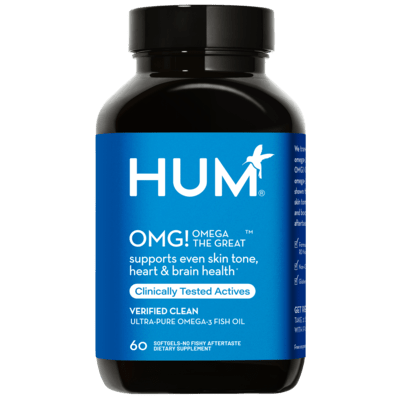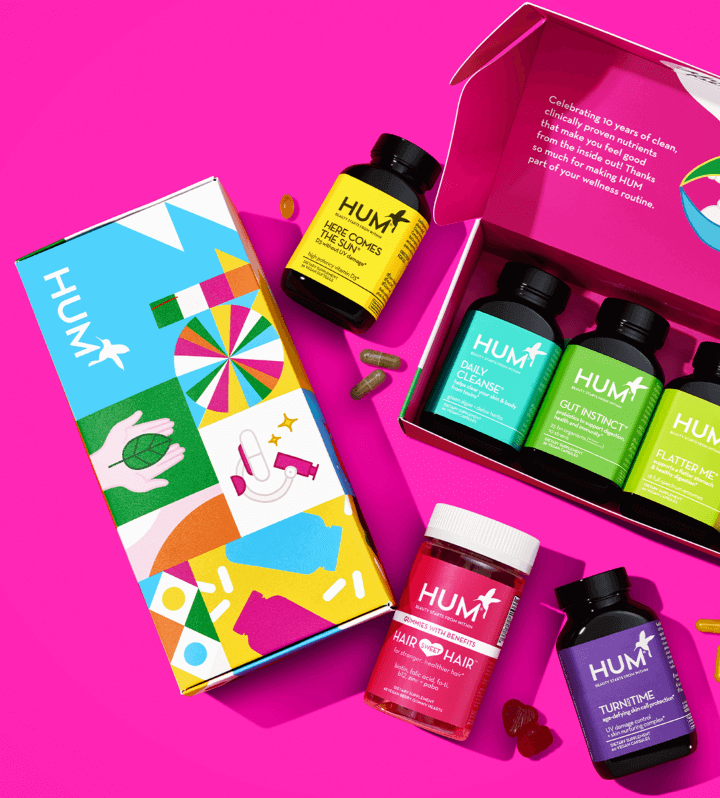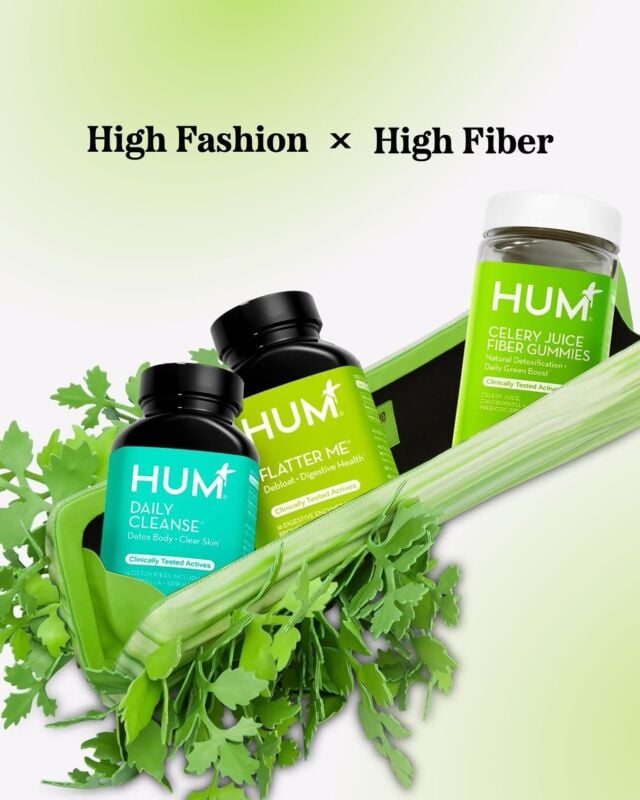Dry, flaky skin can be a pain (not to mention actually painful, too!). But there are ways to fix it outside of slathering yourself in lotion. Experts break down common causes of dry skin and explain exactly how to get rid of dry skin.
There’s a reason why dry skin is one of the most common skin concerns. Your skin is your body’s largest organ, and since it’s constantly changing and regenerating, it’s susceptible to dehydration. Plus, it’s your body’s first line of defense when it comes to protecting you from the elements. If you’re struggling with dry, itchy skin, there are a few potential reasons why. The good news? There are ways to fix it once you identify the cause. From there, you can figure out exactly how to get rid of dry skin.
Below, experts break down all the reasons your skin may be more dehydrated than usual. Plus, they offer concrete ways to turn your dull, cracked skin into a healthy, glowing complexion.
How the Skin Works
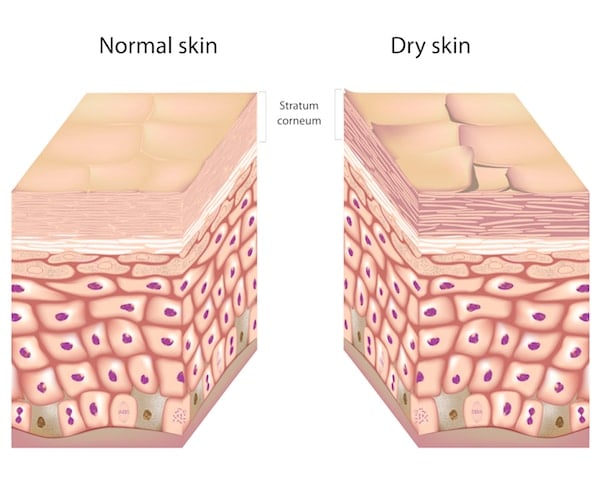
Your skin is made up of two layers: the outer epidermis and the inner dermis. Your epidermis is largely responsible for the health and appearance of your skin. The outermost layer of the epidermis is your stratum corneum, and it maintains and sustains healthy, hydrated skin.
This surface level of your skin consists of dead skin cells and oils, cemented together to form a protective layer. They cover the living skin cells underneath to protect them from infection, dehydration, chemicals, and other hazards. These dead skin cells also retain water to keep your skin healthy and hydrated, which helps prevent dry skin.
Cells in the deepest layer of your epidermis are constantly dividing to make new ones. These new cells are pushed toward the surface of your skin, where they rub against and replace surface cells that flake off. This process is constant and ongoing.
This rejuvenation process reveals why it takes time from when you first start to implement a skincare regimen to when you start to see results. Dry skin can often improve after four weeks, when you’ll have an entirely rejuvenated epidermis.
What Causes Dry Skin?
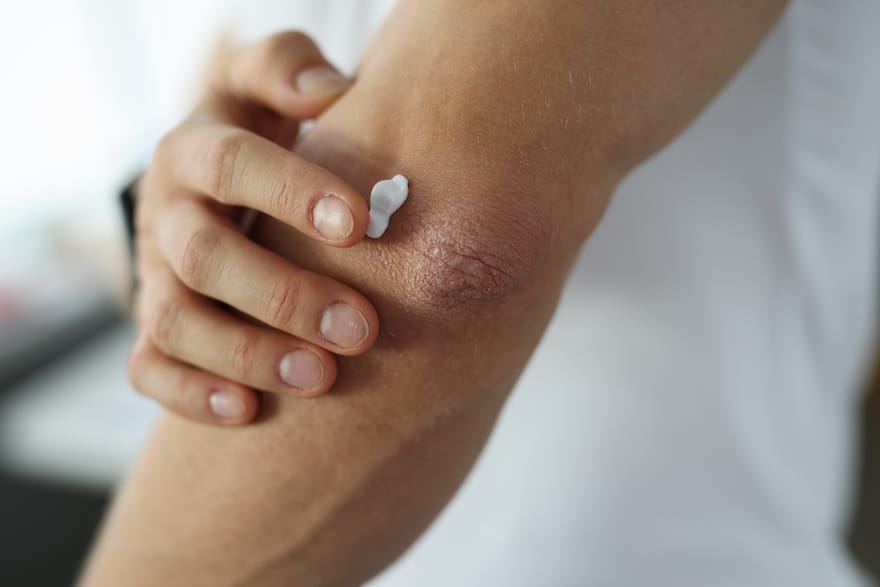
Ever caught yourself wondering, “why is my skin so dry?” Experts explain the possible reasons, below.
Age
By the age of 60, nearly everyone will have developed dry skin, according to the American Academy of Dermatology (AAD). As we age, we become more vulnerable to dry skin, dullness, and a loss of firmness. The epidermis thins as we age, leading to decreased water retention—ultimately leaving the skin is more vulnerable to dehydration. Additionally, the skin’s ability to regenerate lipids that make up the stratum corneum declines as we age. This means that essential fatty acids are even more important to support soft skin over time.
Climate
Have you noticed that your skin feels drier during the winter months? You’re not alone. Cold weather exposure is one of the most common causes of dry skin, says Shilpi Agarwal, MD, family medicine and integrative and holistic medicine physician. “During fall and winter, the body is suddenly exposed to cool air that often lacks humidity and can create dry, irritated skin.”
In addition, sun exposure along with dry, arid climates can damage cells and limit the skin’s ability to hold onto moisture or repair itself. “Your body via the organ of the skin will try to keep itself hydrated by absorbing water from its external environment,” explains Mia Belle, paramedical aesthetician and CEO of Mia Belle Skin. If you live in a dry environment, it will have to grab more water internally to keep hydrated, eventually creating epidermal water loss.”
Nutrition
Diet can also dehydrate and dry out your skin. Fat-free diets, for instance, can deprive the skin of essential fatty acids. “The skin barrier is made up of many types of lipids, including phospholipids, cholesterol, and free fatty acids,” explains HUM Nutritionist Alex Caspero, MA, RD. “When the skin doesn’t have enough of these fats, water can easily escape through the barrier, resulting in dehydrated skin.”
In addition, alcohol and caffeine are diuretics that dehydrate the skin. (Pro tip: If you want to cut back on your alcohol consumption, try mindful drinking.) And if you’re focused on improving your nutrition for dry skin, cut out super-sweet foods. Sugary foods also break down collagen and elastin, thus dulling the skin. Belle also emphasizes the role that collagen plays in dry skin nutrition. “The older we get, the more collagen support we need to give our system.”
Vitamin and Nutrient Deficiencies
Even if you’re avoiding sugary foods and limiting your alcohol consumption, it’s important to make sure you’re eating a well-balanced diet. Skin requires nutrients to stay healthy, and if you’re not getting enough vitamin D, vitamin A, niacin, zinc, or iron, you can develop dry skin, according to the AAD. You can also take the guesswork out of your diet by incorporating supplements for dry skin.
Smoking
Did you know smoking can dry out your skin? If you’re noticing dry, flaky skin on your face, your smoking habit may be to blame. Cigarettes contain harmful chemicals that break down collagen and speed up your skin’s aging process. As a result, your skin becomes drier, according to the AAD.
How to Get Rid of Dry Skin
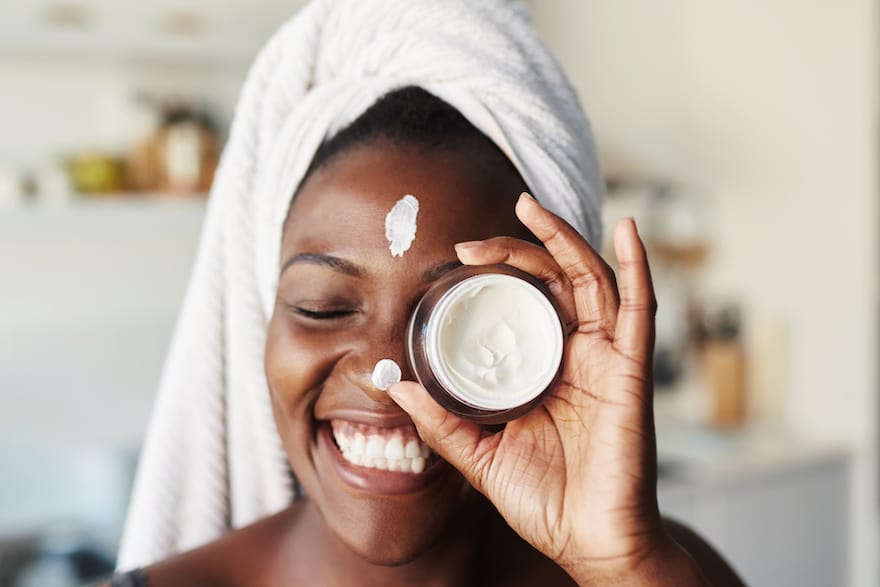
1. Adjust Your Shower Routine
Healing (and preventing) dry skin starts with your bathing habits. Avoid long, hot showers that strip your skin of its natural oils. Take shorter, lukewarm showers instead to help your skin retain its moisture. Additionally, use unscented soaps since scented soaps with chemicals can irritate and dry out the skin.
Dr. Agarwal recommends applying natural oil like coconut or almond immediately after showering. However, you can use any kind of body cream to lock in the moisture from your shower. Then, quickly rinse off and pat dry. This timing will help your skin stay moisturized all day (or night).
Wondering what the best moisturizer is for dry skin is? Look for anything that’s unscented and non-comedogenic (meaning it won’t clog pores). You can use a lotion or a cream—whatever thickness suits your skin.
2. Avoid Over-Exfoliation
It may be tempting to scrub off all of those flakes on your skin, but that may do more harm than good. Whether you have dry skin on your face or your body, it’s important not to over-exfoliate since it’s is vulnerable to irritation. Overdoing the exfoliation may damage your skin’s barrier (the outermost level of your skin), which can lead to even more moisture loss and even drier skin.
However, this doesn’t mean to forego exfoliating altogether. After you turn 20, your skin cell turnover slows and dead skin cells can pile up, diffuse light, and make skin look dull. Aim for once a week and make sure to follow up the exfoliation with a moisturizer.
3. Focus on Your Diet
Wondering how to treat dry skin internally? You can use nutrition for dry skin as a starting point. Try incorporating foods high in hyaluronic acid (a sugar your body naturally produces that helps attract and retain moisture) such as bone broth, organ meats, grapefruits, berries, and sweet potatoes.
Additionally, you can help support your skin’s hydration levels by eating foods like avocado (which contains fatty acids and vitamin A) and broccoli (which contains skin-loving omega-3 fatty acids).
According to Belle, dry skin nutrition also involves balancing your blood sugar levels. “Elevated blood sugar causes osmotic diuresis, where the sugar exits through your kidneys and carries water out with it, creating dehydration.”
Of course, drinking enough water—especially in climates where the skin is prone to dehydration—can’t be emphasized enough. Take this tip from “As the weather gets cold, try warm water with lemon or a decaf herbal tea,” Dr. Agarwal says.
Belle adds that the body can hydrate even more efficiently when we eat our water. “Watermelon, cucumber, apple, and celery slowly hydrate as they make their way through our digestive system,” she says. Thus, these foods are amazing choices for rejuvenating dull, dry skin.
4. Ingest More Healthy Fats Through Vitamins
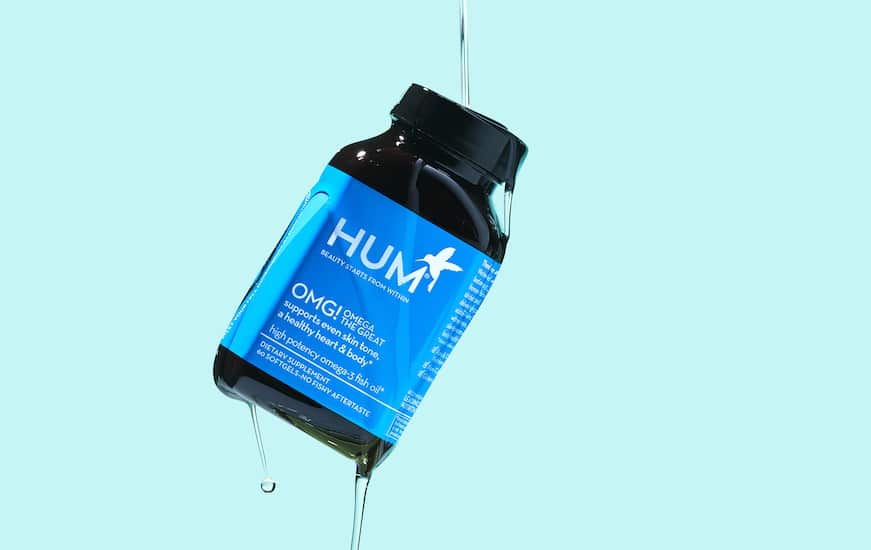
“Healthy fats provide the framework necessary for well-moisturized skin,” Dr. Agarwal notes. Essential fatty acids (EFAs) are polyunsaturated fats that help produce the skin’s natural oil barrier and are critical in keeping the skin hydrated and vibrant.
Dr. Agarwal says that if you can’t get omega-3s in your daily diet, a supplement is another great option. High-quality fish-oil supplements are packed with omega-3 fatty acids that can hydrate your skin from within. When choosing a fish oil, make sure you’re paying attention to the milligrams of EPA and DHA, the actual omega-3 content that replenishes dry skin. For a plant-based option, the omegas are listed as ALA, and can be found from oils such as black currant seeds or sunflower seeds.
“If you have a hard time eating enough omega-3 fatty acids, consider adding HUM’s OMG! Omega the Great to your routine for healthy, hydrated skin,” Caspero says. HUM’s OMG! Omega the Great fish oil supplement contains 800 mg EPA and 400 mg DHA, the ideal clinically studied 2:1 ratio.
For those with dry skin over the age of forty, Belle recommends HUM’s Arctic Repair, a dry skin vitamin that helps improve and strengthen the skin barrier. It’ll lock in moisture for a smooth, glowing complexion. Arctic Repair is packed with 657 mg omega-3 ALA, as well as 500 mg of omega-6 and 207 mg omega-9 from the rejuvenating lingonberry seed. Its unique balance of omegas and vitamins boost skin hydration and elasticity to achieve a radiant glow plus smoother, firmer skin.
Additionally, advanced antioxidants and phytonutrients protect against cell damage, promote cellular health, and support skin rejuvenation. HUM’s Turn Back Time supplement contains advanced antioxidants including vitamin C, phytonutrient-rich anti-inflammatory turmeric, and green tea polyphenols to help prevent dry skin and keep your complexion nourished, firm, and glowing.
Vegetarian? No problem: HUM’s Red Carpet is also a winning supplement for dry skin, Caspero adds. A vegetarian alternative with vitamin E and omegas derived from black currant oil, Red Carpet packed with 120 mg ALA and 150 mg GLA to nourish and hydrate skin cells by providing them with healthy oils.
5. Get All of Your Nutrients
Aside from omega-3s, you may be wondering about other supplements for dry skin. As mentioned above, vitamin D and vitamin A are crucial for skin’s hydration levels—in addition to niacin, zinc, and iron. While you can get these through your diet, it can be helpful to take a supplement to give your system a boost. HUM Nutrition offers a variety of supplements for dry skin, such as Here Comes The Sun (which contains vitamin D) and Base Control (which contains vitamin A, zinc, and iron).

Your Skin’s pH Level Could be Behind Fine Lines, Breakouts, And Dryness
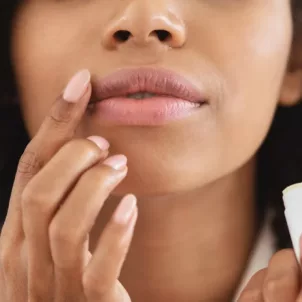
How to Heal Dry, Chapped Lips—Plus, Our Favorite DIY Lip Balm and Scrub

Yes, You Can Get a Summer Glow in the Dead of Winter. Here’s How.

